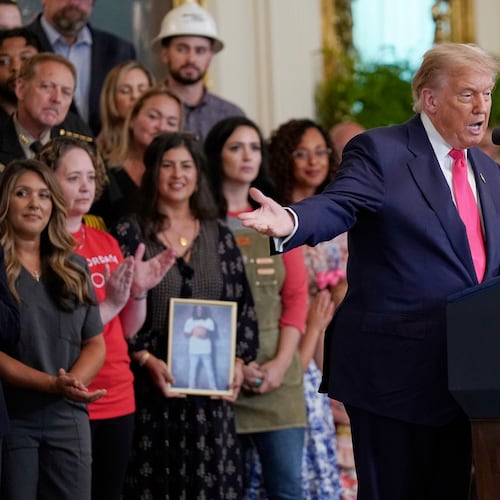Georgia will receive $225 million in federal money to fix bridges over the next five years — a down payment on billions of dollars the state hopes to collect from the bipartisan infrastructure bill Congress approved in the fall.
The money can be used to repair or replace 374 Georgia bridges that are in poor condition and more than 5,300 bridges in fair condition. Most of the worst bridges are in rural parts of the state, though some are in metro Atlanta.
The $45 million a year in federal money is far less than some other states will get because their bridges are in worse shape. But some Georgia officials say the federal aid will make a difference in communities across the state.
“We’ve got millions of dollars’ worth of work to do, and we need some help,” said Robert Price, mayor of Locust Grove in Henry County. “And we’re getting some help.”
The $225 million for bridges is a fraction of the money Georgia expects to receive from the $1.2 trillion infrastructure package.
That includes $8.9 billion over five years for repairs to Georgia roads and highways, $1.4 billion for public transportation and $619 million for airport improvements. It also includes hundreds of millions for broadband internet, electric-vehicle charging stations, upgrading the electrical grid and ports, and other initiatives in Georgia.
For now, much of that funding exists mostly on paper. Congress must formally appropriate the money, and federal agencies must adopt rules that govern how it can be spent. It remains to be seen how much Georgia will actually receive.
But Congress appropriated $26.5 billion over five years for bridges nationwide as part of the infrastructure law. The money will be available beginning this year.
“This bipartisan infrastructure bill is going to deliver the resources we need to upgrade our roads and bridges to ensure that they are safe, and that they’re ready to continue serving our state for decades to come,” U.S. Sen. Jon Ossoff said last week at a Henry County press conference.
The money will be distributed to states based on a formula that considers the condition of their bridges. Seven states — including California, Louisiana and New York — will receive more than $1 billion to fix bridges. Meanwhile, Georgia is one of 23 states that will get the minimum of $225 million.
In a statement, the Georgia Department of Transportation said the federal formula “effectively penalizes states that have prioritized bridge maintenance and state of good repair.” It noted Georgia “has by far the highest population of any state receiving the mandatory minimum.”
Georgia has spent hundreds of millions of dollars in recent years to repair and replace bridges. As a result, the number of deficient bridges fell from 539 in 2016 to 374 in 2020, according to an analysis by the American Road and Transportation Builders Association. That’s 2.5% of the state’s 14,964 bridges.
Still, there’s plenty of work remaining. GDOT will determine which bridges are repaired.
In Locust Grove, Price welcomed the prospect of funding for a Ga. 42 bridge over the Norfolk Southern railroad tracks. It was built in 1938 and widened in 1979. GDOT says it needs to be replaced.
According to the U.S. Census Bureau, Locust Grove’s population grew 66% over a decade to 8,947 in 2020. Price said Ga. 42 gets plenty of warehouse truck traffic
“We have a lot of new homes here,” he said. “We need all the help we can get.”
About the Author
Keep Reading
The Latest
Featured




